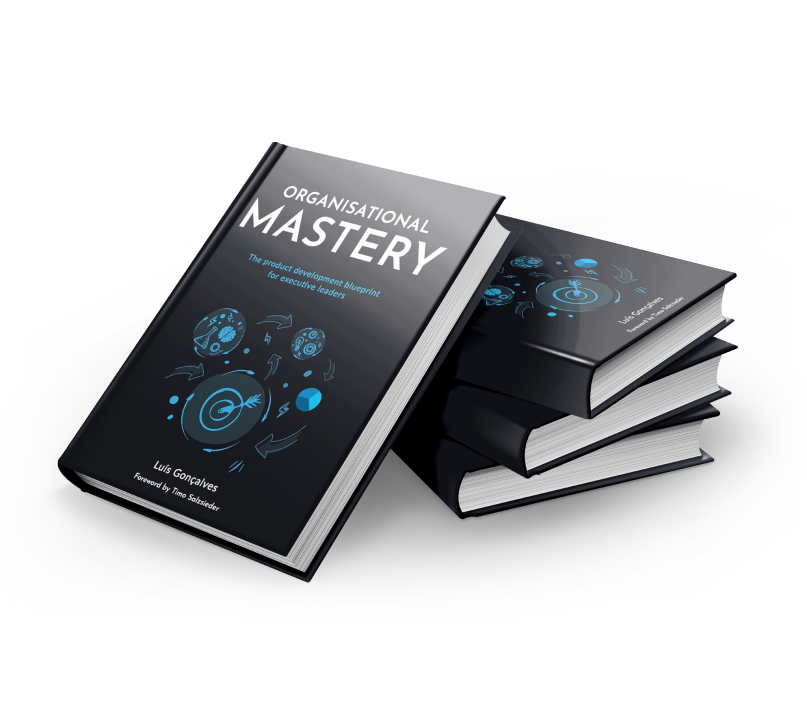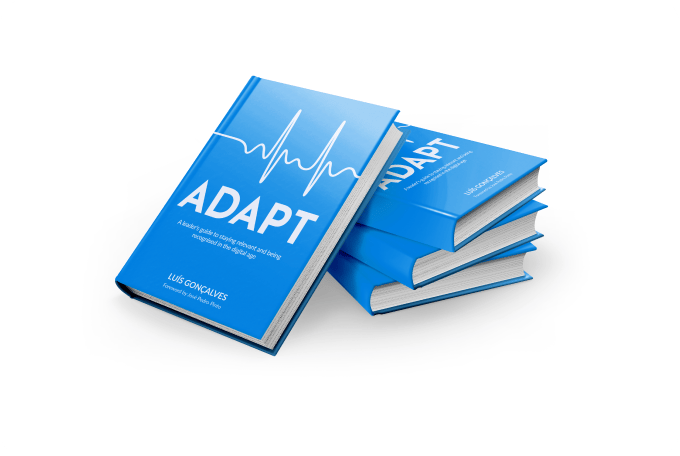Share this
Dual Track Agile: A Catalyst for the Project-to-Product Transition
by Luis Gonçalves on Aug 23, 2024 5:36:03 AM

In today's rapidly evolving digital landscape, organizations are increasingly recognizing the need to shift from a project-centric mindset to a product-oriented approach. This transformation is crucial for maintaining competitiveness and delivering continuous value to customers.
One approach that has gained significant traction in facilitating this transition is Dual Track Agile. In this blog post, we'll explore how Dual Track Agile can serve as a catalyst for organizations making the leap from projects to products, and why implementing this approach is essential during this pivotal shift.
Understanding the Project-to-Product Transition
Before delving into Dual Track Agile, it's important to understand the fundamental differences between project-based and product-oriented approaches:
Project-Centric Approach:
- Time-bound initiatives with clear start and end dates
- Focus on delivering specific features within predetermined constraints
- Often results in handoffs between teams and organizational silos
- Can lead to misalignment with evolving customer needs
Product-Oriented Approach:
- Ongoing effort to deliver continuous value to customers
- Emphasis on long-term vision and strategy
- Encourages cross-functional collaboration and continuous improvement
- Aligns closely with customer needs through constant feedback and iteration
The transition from projects to products is not merely a change in terminology; it represents a fundamental shift in how organizations approach value creation, customer engagement, and long-term success.
Dual Track Agile: An Approach, Not a Methodology
It's crucial to clarify that Dual Track Agile is an approach, not a prescriptive methodology. This distinction is important because it allows organizations to adapt Dual Track Agile to their specific context and needs, rather than following a rigid set of rules or processes.
Dual Track Agile consists of two parallel tracks that run simultaneously:
- Discovery Track: Focused on understanding user needs, validating ideas, and defining what should be built.
- Delivery Track: Centered on building, testing, and releasing product increments.
These tracks are not separate methodologies but rather complementary streams of work that inform and support each other.
Implementing Dual Track Agile in the Project-to-Product Transition
When organizations decide to move from a project-centric model to a product-oriented approach, implementing Dual Track Agile can provide a structured yet flexible framework to facilitate this transition. Here's how to implement Dual Track Agile during this shift:
- Reframe Your Thinking
The first step in implementing Dual Track Agile is to reframe your organization's thinking from project-based outcomes to ongoing product evolution. This mental shift is crucial for:
- Embracing continuous discovery and delivery
- Focusing on long-term value creation rather than short-term project completion
- Encouraging a culture of experimentation and learning
Implementation Tip: Conduct workshops and training sessions to help teams understand the differences between project and product thinking, and how Dual Track Agile supports the latter.
- Reorganize Teams
Traditional project structures often separate research, design, and development teams. In a product-oriented model supported by Dual Track Agile:
- Form cross-functional product teams that include members with skills in both discovery (e.g., UX researchers, product managers) and delivery (e.g., developers, QA engineers)
- Ensure teams have the autonomy to make decisions about their product
Implementation Tip: Start with a pilot team to test the new structure before rolling it out across the organization.
- Align Discovery and Delivery Activities
In the project-to-product transition, it's crucial to align discovery and delivery activities:
- Ensure that insights from the Discovery track directly inform the Delivery track
- Create lightweight processes for smooth handoffs between discovery and delivery activities
- Maintain overall alignment between the two tracks through regular sync meetings
Implementation Tip: Use visual management tools to make the flow of work between Discovery and Delivery tracks transparent to all team members.
- Adopt a Continuous Discovery Mindset
Unlike projects with fixed requirements, products require ongoing discovery to stay relevant:
- Implement regular user research activities as part of the Discovery track
- Use techniques like rapid prototyping and user testing to validate ideas quickly
- Prioritize features and enhancements based on user value and business impact
Implementation Tip: Establish a cadence for discovery activities, ensuring they become a regular part of the team's routine.
- Embrace Iterative Delivery
Move away from the "big bang" releases common in project-based approaches:
- Break down product development into small, valuable increments
- Release frequently to gather real-world feedback
- Use feedback to inform both future development and ongoing discovery efforts
Implementation Tip: Set up the infrastructure and processes needed for continuous integration and deployment to support frequent releases.
- Adjust Metrics and KPIs
Project-based metrics often focus on time, scope, and budget. In a product-oriented model:
- Shift to metrics that measure user value and business impact
- Implement both leading (e.g., user engagement) and lagging (e.g., revenue) indicators
- Use metrics from both Discovery and Delivery tracks to guide decision-making
Implementation Tip: Develop a balanced scorecard that includes metrics for both tracks and aligns with overall business objectives.
- Foster a Learning Culture
The transition to a product-oriented approach requires a culture that values learning and adaptation:
- Encourage experimentation and tolerate "failures" as learning opportunities
- Implement regular retrospectives for both Discovery and Delivery activities
- Share learnings across the organization to prevent silos from reforming
Implementation Tip: Create forums for teams to share their experiences and learnings from both successful and unsuccessful initiatives.
- Align Stakeholders
Stakeholders accustomed to project-based reporting may need guidance to understand the new approach:
- Educate stakeholders on the benefits of continuous discovery and delivery
- Provide visibility into the ongoing work of both tracks
- Manage expectations around the iterative nature of product development
Implementation Tip: Develop new reporting formats that showcase the value delivered and learnings gained, rather than just features completed.
- Invest in Tools and Skills
Supporting Dual Track Agile in a product-oriented model may require new tools and skills:
- Provide teams with tools for both discovery (e.g., prototyping software, user research platforms) and delivery (e.g., Agile project management tools)
- Invest in training to build skills in areas like user research, data analysis, and product management
Implementation Tip: Conduct a skills assessment to identify gaps and develop a training plan to address them.
- Start Small and Scale
Implementing Dual Track Agile as part of the project-to-product transition is a significant change:
- Begin with a pilot team or product to test and refine the approach
- Gradually expand to other teams, applying learnings from early adopters
- Be prepared to adapt the approach based on your organization's specific needs and challenges
Implementation Tip: Create a center of excellence to support teams as they adopt the new approach and to ensure consistency across the organization.
Challenges and Considerations
While implementing Dual Track Agile can greatly facilitate the project-to-product transition, it's not without challenges:
- Balancing Acts: Teams must find the right balance between discovery and delivery activities.
- Mindset Shift: Transitioning from a project to a product mindset can be challenging for team members and stakeholders.
- Organizational Alignment: Aligning various departments with the product-oriented approach can be complex.
- Resource Allocation: Deciding how to allocate resources between Discovery and Delivery tracks can be difficult.
Conclusion
Implementing Dual Track Agile as part of the transition from a project-centric to a product-oriented approach offers organizations a powerful framework for becoming more customer-centric, adaptive, and innovative. By running discovery and delivery activities in parallel, teams can ensure they're building the right things in the right way, continuously delivering value to users while adapting to changing market conditions.
The shift from projects to products is not just about adopting new approaches; it's a fundamental change in how organizations think about value creation. Dual Track Agile provides a structured yet flexible approach to navigate this transformation, enabling businesses to become truly product-led.
As you embark on your journey from projects to products, consider how implementing Dual Track Agile can help your organization balance the need for validation and learning with the imperative to deliver working software. By embracing this approach, you'll be better equipped to create products that truly resonate with users and drive long-term business success in the digital age.
Remember, this transition takes time and patience. Start small, learn from your experiences, and gradually scale the approach across your organization. With persistence and a commitment to continuous improvement, you'll be well on your way to becoming a truly product-led organization.
Disclaimer
This blog post was initially generated using Inno Venture AI, an advanced artificial intelligence engine designed to support digital product development processes. Our internal team has subsequently reviewed and refined the content to ensure accuracy, relevance, and alignment with our company's expertise.
Inno Venture AI is a cutting-edge AI solution that enhances various aspects of the product development lifecycle, including intelligent assistance, predictive analytics, process optimization, and strategic planning support. It is specifically tailored to work with key methodologies such as ADAPT Methodology® and Scaleup Methodology, making it a valuable tool for startups and established companies alike.
Inno Venture AI is currently in development and will soon be available to the public. It will offer features such as intelligent product dashboards, AI-enhanced road mapping, smart task prioritization, and automated reporting and insights. If you're interested in being among the first to access this powerful AI engine, you can register your interest at https://innoventureai.com/
Share this
- Agile Methodologies (18)
- Product Strategy (18)
- OKRs (16)
- Scrum (16)
- Product Mindset (14)
- Project To Product (10)
- Agile Retrospectives (9)
- CoPs (9)
- Knowledge Sharing (9)
- Time To Market (8)
- Product Discovery (7)
- Continuous Improvement (5)
- Strategy (5)
- Scrum Master (4)
- Content Marketing Strategy (3)
- Product Owner (3)
- Technical Excellency (3)
- Digital Transformation (2)
- Innovation (2)
- Scaling (2)
- Team Building (2)
- Business Model (1)
- Cost Of Delay (1)
- Customer Feedback (1)
- Customer Journey (1)
- Customer Personas (1)
- Design Thinking (1)
- Digital Leadership (1)
- Digital Product Tools (1)
- Go To Market Strategy (1)
- Google Design Sprint (1)
- Lean Budgeting (1)
- Lean Change Management (1)
- Market Solution Fit (1)
- Organisational Impediments (1)
- Outsourcing (1)
- Product (1)
- Product Metrics (1)
- Product Roadmaps (1)

Organisational Mastery
Get your free copy

ADAPT
Get your free copy

Product First
Get your free copy
